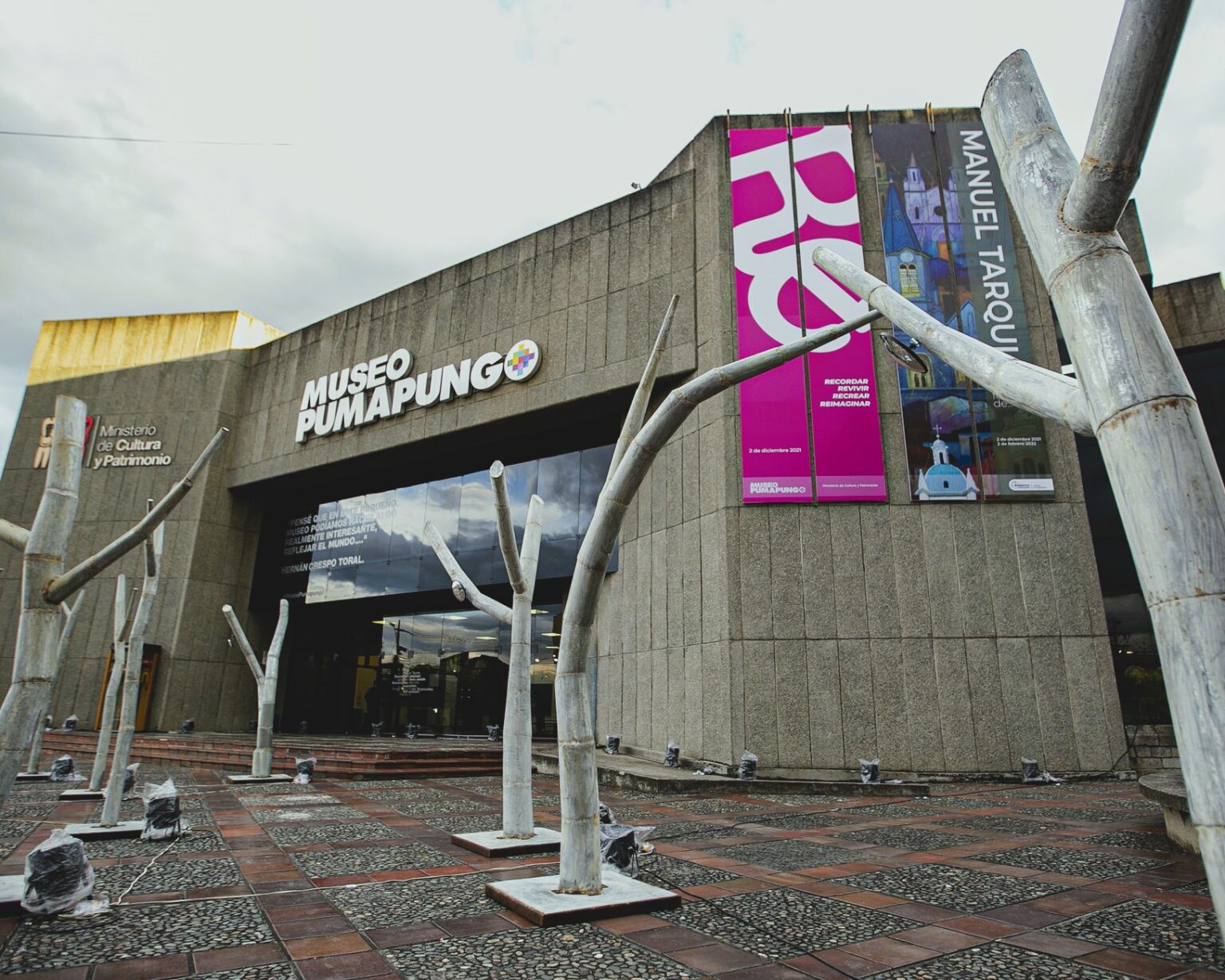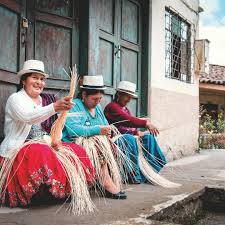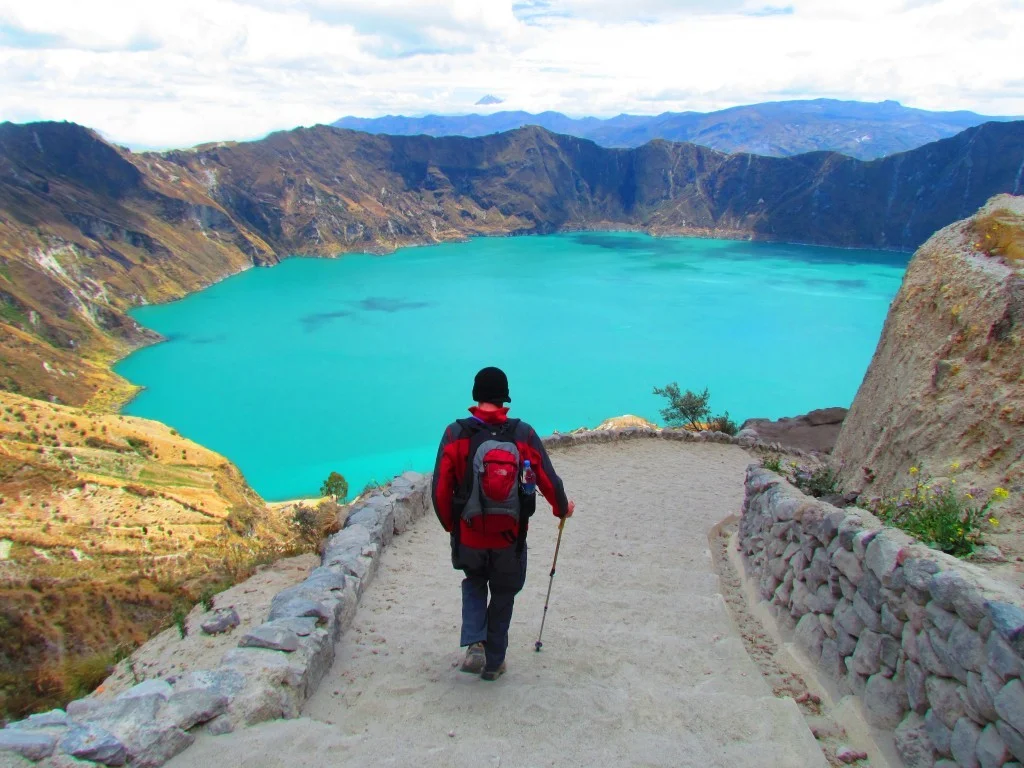Imagine stepping into a treasure trove of history and culture, where the past comes alive through captivating exhibits and ancient artifacts. Welcome to the Pumapungo Museum in Cuenca, a must-visit destination for travelers and history enthusiasts alike. Nestled in the heart of Cuenca, this museum offers a unique glimpse into Ecuador’s rich heritage, blending the stories of indigenous cultures with the splendor of colonial art.
At the Pumapungo Museum, you’ll be enchanted by a diverse collection that includes everything from traditional costumes and ceremonial objects to intricate baroque art and even shrunken heads from the Shuar people. This fascinating mix not only showcases the depth of Ecuadorian history but also highlights the intricate craftsmanship and cultural significance behind each piece.
But the museum isn’t just about indoor exhibits. Step outside, and you’ll find yourself in a sprawling archaeological and ethnobotanical park. Here, you can explore the remnants of an ancient Incan military post, stroll through gardens featuring over 300 plant species, and visit a bird rescue center home to vibrant macaws, parrots, and eagles. It’s a perfect spot for nature lovers and history buffs to immerse themselves in the beauty and history of Cuenca.
Whether you’re a seasoned traveler or a curious tourist, the Pumapungo Museum offers an unforgettable experience that bridges the past and present. Stay tuned as we delve deeper into the museum’s collections, uncovering the stories behind its most iconic exhibits and offering tips on how to make the most of your visit. Get ready to embark on a journey through time and culture, right here at the Pumapungo Museum.
The Rich History of Pumapungo Museum
The Pumapungo Museum, established in 1979, is a cornerstone of Cuenca’s cultural landscape. Its name, which translates to ‘Puma Bridge,’ reflects the area’s rich historical significance. Located in the heart of Cuenca, Ecuador, the museum has become a beacon for those interested in the ethnographic and artistic heritage of the region.
The museum’s establishment was driven by a desire to preserve and showcase the diverse cultural narratives of Ecuador. Over the years, it has amassed an extensive collection of artifacts that include traditional costumes, baroque art, and reconstructions of Afro-Ecuadorian houses. Each exhibit offers a window into the past, allowing visitors to connect with the traditions and histories that have shaped the region.
The Significance of ‘Pumapungo’
The name ‘Pumapungo’ holds a special place in the local culture. It is derived from the Kichwa words ‘puma’ (puma) and ‘pungo’ (door or entrance), symbolizing the entrance to the land of the puma. This name is not just a reflection of the area’s natural fauna but also an acknowledgment of its historical importance as a site of Incan and pre-Incan civilizations.
Historically, Pumapungo was an important administrative and religious center for the Incas. The remnants of this past are still visible today in the form of archaeological ruins, which are part of the museum’s outdoor exhibits. These ruins provide a tangible link to the past, offering insights into the architectural and societal structures of ancient civilizations.
Notable Events and Exhibitions
Since its inception, the Pumapungo Museum has hosted numerous notable events and exhibitions. In 2019, the museum temporarily exhibited 37 works by the renowned artist Salvador Dalí, drawing art enthusiasts from around the world. This exhibition was a testament to the museum’s commitment to bringing global art to Cuenca while also highlighting its own rich collections.
The museum’s ethnographic collections are particularly noteworthy. They include traditional costumes and objects that represent the beliefs and rites of various Ecuadorian peoples. One of the most intriguing exhibits is the collection of tzantzas, or shrunken heads, from the Shuar people. These artifacts provide a unique glimpse into the cultural practices and spiritual beliefs of the indigenous communities.
Reconstruction of Afro-Ecuadorian Houses
One of the standout features of the Pumapungo Museum is its reconstructions of Afro-Ecuadorian houses from the province of Esmeraldas. These reconstructions are not just architectural displays but are also cultural narratives that tell the story of the Afro-Ecuadorian community’s history and traditions.
Visitors can explore these houses to understand the living conditions, social structures, and cultural practices of the Afro-Ecuadorian people. The attention to detail in these reconstructions helps bring the past to life, offering an immersive experience that is both educational and engaging.
The Pumapungo Museum in Cuenca is more than just a repository of artifacts; it is a vibrant cultural institution that celebrates the rich tapestry of Ecuador’s history. Whether you are a history buff, an art lover, or a curious traveler, the museum offers a unique opportunity to delve into the past and discover the wonders of Ecuadorian heritage.
Exploring the Exhibits at Pumapungo Museum
The Pumapungo Museum in Cuenca offers a diverse range of exhibits that provide a comprehensive overview of Ecuador’s cultural and historical landscape. From ethnographic displays to archaeological artifacts, the museum has something for everyone. Let’s delve into the various exhibits that make this museum a must-visit destination.
Ethnographic Collections
The ethnographic collections at Pumapungo Museum are a highlight for many visitors. These exhibits include traditional costumes and objects that represent the beliefs and rites of the various peoples of Ecuador. One of the most intriguing displays is the collection of tzantzas, or shrunken heads, from the Shuar people. These artifacts provide a unique glimpse into the cultural practices and spiritual beliefs of this indigenous community.
In addition to the tzantzas, the museum features reconstructions of Afro-Ecuadorian houses from the province of Esmeraldas. These reconstructions offer an immersive experience, allowing visitors to explore the living conditions, social structures, and cultural practices of the Afro-Ecuadorian people.
Archaeological Artifacts
The museum’s archaeological section is equally impressive, showcasing artifacts that span over 10,000 years of history. Visitors can explore a variety of ceramics, tools, and ucuyayas (amulets) that represent mythical characters and ancient practices. These artifacts provide valuable insights into the daily lives and spiritual beliefs of Ecuador’s ancient civilizations.
One of the standout features of the archaeological exhibits is the outdoor area, which includes the remnants of an ancient Incan military post. This site offers a tangible link to the past, allowing visitors to walk through history and imagine the lives of those who once inhabited the area.
Art and Multimedia Exhibits
The Pumapungo Museum also boasts an impressive collection of art and multimedia exhibits. The museum houses a room dedicated to baroque art from the 18th century, featuring intricate pieces that showcase the artistic prowess of the era. In 2019, the museum temporarily exhibited 37 works by the renowned artist Salvador Dalí, further cementing its reputation as a cultural hub.
In addition to traditional art, the museum has a unique collection of over 5,000 cassettes, including films of Ecuadorian cinema and musical recordings. This multimedia collection offers a fascinating look into the country’s artistic and cultural evolution over the decades.
- Traditional costumes and objects representing Ecuadorian beliefs and rites
- Collection of tzantzas (shrunken heads) from the Shuar people
- Reconstructions of Afro-Ecuadorian houses
- Variety of ceramics, tools, and ucuyayas (amulets)
- Outdoor archaeological site with ancient Incan military post
- Baroque art from the 18th century
- Temporary exhibitions, including works by Salvador Dalí
- Collection of over 5,000 cassettes featuring Ecuadorian cinema and music
Whether you’re interested in ethnography, archaeology, or art, the Pumapungo Museum in Cuenca offers a rich and varied experience that caters to all interests. Don’t miss the chance to explore these fascinating exhibits and immerse yourself in Ecuador’s vibrant cultural heritage.
Visiting the Pumapungo Archaeological Park
Adjacent to the Pumapungo Museum in Cuenca lies the Pumapungo Archaeological Park, a sprawling four-hectare complex that offers a unique blend of history, nature, and wildlife. This outdoor extension of the museum provides visitors with an immersive experience that complements the rich indoor exhibits.
The park is divided into several distinct areas, each offering a different perspective on the region’s cultural and natural heritage. From the remnants of an ancient Incan military post to a lush ethnobotanical garden and a vibrant bird rescue center, the Pumapungo Archaeological Park is a must-visit for anyone exploring Cuenca.
Incan Ruins
One of the highlights of the park is the well-preserved foundations of a former Incan military post. These ruins offer a tangible connection to the past, allowing visitors to walk through history and imagine the lives of the Incan soldiers who once guarded this strategic location. The site includes remnants of stone structures and terraces that showcase the architectural prowess of the Incan civilization.
As you explore the ruins, you’ll find informative plaques that provide context and historical background, enhancing your understanding of the significance of this site. The panoramic views from the terraces are breathtaking, offering a glimpse into the strategic importance of this location in ancient times.
Ethnobotanical Park
The ethnobotanical park within Pumapungo is a living museum that showcases over 300 species of plants native to the region. This garden is not only a feast for the eyes but also an educational resource, highlighting the traditional uses of these plants by indigenous cultures. Visitors can learn about medicinal herbs, edible plants, and other flora that have played a crucial role in the daily lives of the local people for centuries.
Strolling through the ethnobotanical park, you’ll encounter a variety of ecosystems, from lush tropical gardens to arid highland zones. Each section is meticulously labeled, providing valuable information about the plants and their uses. This area of the park is perfect for nature enthusiasts and those interested in ethnobotany.
Bird Rescue Center
The bird rescue center is another standout feature of the Pumapungo Archaeological Park. Home to a variety of rescued birds, including vibrant macaws, parrots, and majestic eagles. This center is dedicated to the rehabilitation and conservation of avian species. Visitors can observe these beautiful creatures up close and learn about the efforts being made to protect them.
The center provides educational displays and interactive exhibits that explain the challenges faced by these birds in the wild. Such as habitat loss and illegal trafficking. It’s an excellent opportunity for visitors to gain a deeper appreciation for Ecuador’s diverse birdlife and the importance of conservation efforts.
In conclusion, the Pumapungo Archaeological Park offers a multifaceted experience that enriches any visit to the Pumapungo Museum in Cuenca. Whether you’re fascinated by ancient history, intrigued by ethnobotany, or passionate about wildlife conservation, this park has something to offer. Don’t miss the chance to explore this remarkable site and immerse yourself in the wonders of Ecuador’s cultural and natural heritage.
Unlock the Treasures of Pumapungo Museum
As you plan your visit to the Pumapungo Museum in Cuenca, prepare to be immersed in a captivating journey through Ecuador’s rich cultural and historical tapestry. From its extensive ethnographic collections to its fascinating archaeological artifacts. The museum offers an unparalleled glimpse into the diverse traditions and histories that have shaped this vibrant region.
Highlights of the museum include the intriguing tzantzas or shrunken heads from the Shuar people. Reconstructions of Afro-Ecuadorian houses, and a variety of ceramics and tools that span over 10,000 years of history. Each exhibit is meticulously curated to provide visitors with a deep understanding of the cultural practices, spiritual beliefs, and everyday lives of Ecuador’s ancient civilizations. Don’t miss the baroque art room and the impressive multimedia collection. Which together offer a comprehensive overview of the country’s artistic evolution.
Beyond the indoor exhibits, the Pumapungo Archaeological Park extends the museum experience into a lush, outdoor setting. Explore the remnants of an ancient Incan military post, stroll through the ethnobotanical park with over 300 plant species. Visit the bird rescue center to see vibrant macaws, parrots, and eagles up close. This multifaceted park provides a unique blend of history, nature, and wildlife, enriching your visit to Cuenca.
To Sum Up
- Traditional costumes and objects representing Ecuadorian beliefs and rites
- Collection of tzantzas (shrunken heads) from the Shuar people
- Reconstructions of Afro-Ecuadorian houses
- Variety of ceramics, tools, and ucuyayas (amulets)
- Outdoor archaeological site with ancient Incan military post
- Baroque art from the 18th century
- Temporary exhibitions, including works by Salvador Dalí
- Collection of over 5,000 cassettes featuring Ecuadorian cinema and music
Whether you’re a history buff, an art lover, or simply a curious traveler. The Pumapungo Museum in Cuenca promises an unforgettable experience. Embrace the opportunity to delve into Ecuador’s vibrant past. Make the most of your visit by exploring both the indoor exhibits and the expansive archaeological park. Plan your visit today and unlock the treasures of Pumapungo Museum. For more travel tips and accommodations in Cuenca, visit Hotel Boutique Mansión Alcázar.




